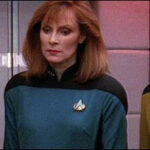The outbreak of World War 1 in 1914 forced significant changes to the meticulously crafted German military uniforms. While the famed pre-war German Army prided itself on diverse regimental distinctions and colorful parade uniforms, the grim realities of modern warfare necessitated simplification and practicality, even for officers. This article explores the wartime evolution of World War 1 German Officer Uniforms, focusing on the key modifications and enduring features that defined their appearance on the battlefields of Europe.
Prior to 1910, the German military uniform landscape was a patchwork of state-specific colors and regimental insignia. Imagine the complexity – each German state, and often individual regiments, boasted unique uniform colors, buckle mottos, badges, and helmet plates, commemorating historical battles and distinctions. Even within regiments, variations existed. For instance, select companies might have unique designations, like the “Leib” (Guard) Company, or special adornments, such as the silver death’s head plate worn by the 3rd Battalion of the 92nd Infantry Regiment from Brunswick, a detail absent in the 1st and 2nd battalions. This pre-war era, while visually rich, presented logistical challenges.
The adoption of the Feldgrau (field grey) uniform in 1910 was a crucial step towards standardization across the entire German Army. However, this standardization for field uniforms did not entirely erase the pre-existing state and regimental variations, which were maintained for parade, ceremonial, and off-duty occasions. This system, while manageable in peacetime, became unsustainable under the pressures of war. The need for rapid mobilization and efficient supply chains demanded further simplification of the field uniform, a process that unfolded in stages throughout the war.
For officers, the transition to Feldgrau maintained a degree of pre-war elegance while adapting to battlefield necessities. Officers initially retained many of the same tunic styles as enlisted men, but with key distinctions in quality and trim. The Pickelhaube, or spiked helmet, remained a symbol of German military authority, although its impracticality in trench warfare soon became apparent.
The early war period saw German officers in Feldgrau versions of existing tunic patterns. The 1910 tunic, with its Brandenburg cuffs and distinctive collar, was adapted into field grey for officers. Rank was primarily indicated by shoulder boards and collar Litzen (braids), which, while also simplified compared to full dress uniforms, still clearly denoted officer status. Officer’s uniforms were typically made of higher quality material and featured finer tailoring than those of enlisted ranks.
As the war progressed and resource scarcity intensified, further modifications were implemented. The 1915 Transitional tunic simplified cuff designs, replacing the more elaborate Brandenburg and Swedish cuffs with simpler turn-back cuffs. This change, while driven by practicality, was applied across ranks, including officers. Officers, however, often maintained a cleaner, more tailored look even with the simplified cuffs.
The iconic Pickelhaube, while initially retained, proved unsuitable for trench warfare. Officers, like enlisted men, began to use helmet covers, initially displaying regimental numbers which were later omitted for camouflage purposes. The leather construction of the Pickelhaube also became problematic due to material shortages. Substitute materials like felt, fiberboard, and even metal were used. By 1916, the steel helmet, or Stahlhelm, was introduced, offering significantly better protection against shrapnel and bullets. Officers, while sometimes slower to adopt the Stahlhelm initially, eventually transitioned to it for frontline combat, recognizing its superior protective qualities.
By 1915, a simpler tunic known as the 1915 Bluse type emerged. This tunic featured concealed buttons in a fly front, replacing the exposed brass buttons of earlier tunics. This simplification, again driven by wartime austerity, impacted officer uniforms as well, although officers’ versions might still retain subtle indicators of higher quality. Buttons, initially brass or zinc, were increasingly made from horn, wood, bakelite, or other ersatz materials as metal became scarce.
Officer rank insignia remained primarily on the shoulder boards, though variations in application and materials occurred throughout the war. The color and complexity of shoulder board braiding and pips continued to denote rank, even as uniforms themselves became more utilitarian.
Headgear for officers also evolved. While the Pickelhaube was standard issue at the war’s outset, the Feldmütze (field cap) became increasingly common, especially away from the immediate front lines. Officers’ Feldmützen often featured a visor, distinguishing them from the visorless caps worn by enlisted men. These caps were field grey with state-colored bands, and national and state cockades.
Footwear for officers initially consisted of jackboots, but ankle boots with leather or canvas Gamaschen (puttees) became more practical, especially in trench conditions. Officers, particularly those in elite or specialized units, sometimes adopted private purchase boots of higher quality and more practical designs.
Belt buckles for officers generally mirrored those of enlisted men, reflecting state and national emblems. However, officers were more likely to retain pre-war brass or nickel buckles for longer, as the transition to painted iron buckles was primarily driven by the need to conserve resources at the enlisted level.
In conclusion, World War 1 German officer uniforms underwent a significant transformation from the elaborate and diverse styles of the pre-war era to more practical and standardized field uniforms. While officers retained distinctions in quality, tailoring, and subtle details of rank insignia, the overarching trend was towards simplification and adaptation to the harsh realities of industrialized warfare. The evolution of the German officer uniform during World War 1 reflects the broader changes within the German Army itself, as it transitioned from a peacetime force with elaborate traditions to a war machine focused on efficiency and survival in the trenches.
© 2023 onlineuniforms.net – Content adapted and expanded from original work by Ralph Reiley. All rights reserved.

